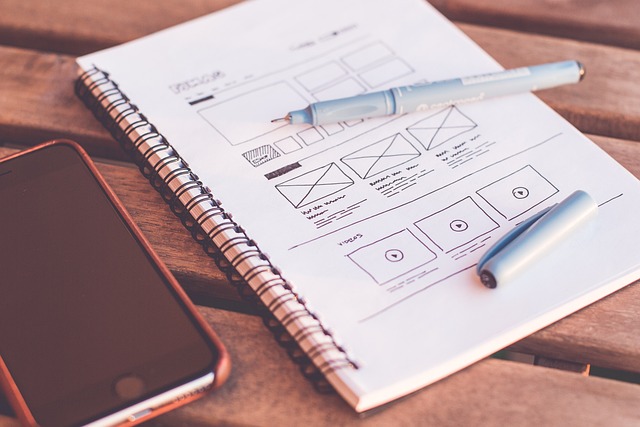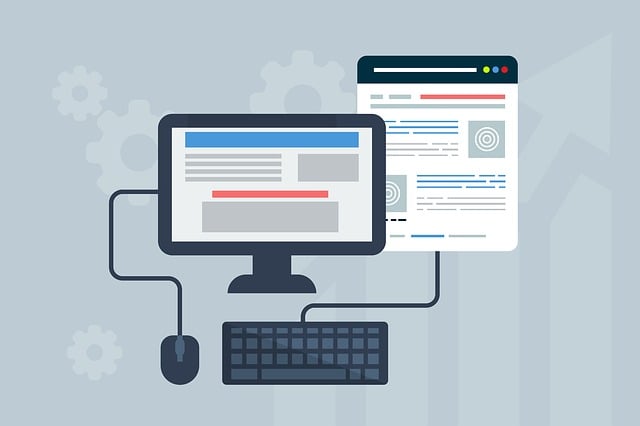A web designer works on the appearance, layout and in some cases the content of a website. For example, appearance refers to the colors, fonts and images used and refers to how the information is structured and classified. A good website design should be easy for the user to use and also attractive in terms of aesthetics and should be designed according to the type of user who visits the site. Many web pages are designed with a focus on simplicity. DigitCo strives to provide the best services for your business with an attractive design that you like.
According to the current standards of web design and the use of reliable data, the digitco team provides the desired design for businesses such as online stores, retail, entertainment, recreation and pastime, education and training, restaurants and cafes, clothing. , accessories, mobile phones, travel and cosmetics implements on the website of customers.
Graphic Design for web
A full-scale and at the same time standard project can attract customers. The digitco team will help you achieve your goals by analyzing your goals. digitco will provide you with beautiful projects by employing expert and experienced people in the field of web design and by taking advantage of group creativity and innovation.
Website design, logo design, programming, user interface (UI) and user experience (UX) are among the activities of this collection. It will include compliance with standards and reactivity of the site and other variables.

Web Design
Web design refers to the process of creating the visual look and feel of a website. It encompasses a range of disciplines, including graphic design, user interface (UI) design, and user experience (UX) design. The ultimate goal of web design is to create a website that is aesthetically pleasing, easy to use, and effective in achieving its intended purpose. In this article, we will explore the key aspects of web design in detail.
Purpose and Goals
The first step in web design is to identify the purpose and goals of the website. This involves determining the target audience, the message that the website should convey, and the actions that users should take when visiting the website. The purpose and goals of the website should guide all design decisions.
Visual Design
Visual design refers to the visual elements of the website, such as the layout, color scheme, typography, and graphics. The visual design should be consistent with the purpose and goals of the website, as well as the brand identity of the organization. It should also be visually appealing and easy to navigate.
User Interface Design
User interface (UI) design focuses on the design of the interface elements that users interact with on the website, such as buttons, forms, menus, and navigation bars. The UI design should be intuitive and easy to use, with a clear hierarchy of information. It should also be consistent with the visual design of the website.
User Experience Design
User experience (UX) design focuses on the overall experience of the user when interacting with the website. This includes factors such as ease of use, accessibility, and usability. The UX design should be tailored to the target audience, with a focus on creating a positive user experience.
Responsive Design
Responsive design refers to the design of the website to be adaptable to different screen sizes and devices. This is essential in today’s world of mobile devices and different screen sizes. A responsive design ensures that the website is accessible and easy to use, regardless of the device being used.
Content Strategy
Content strategy refers to the planning, creation, and management of content on the website. This includes the creation of text, images, videos, and other media. The content strategy should be tailored to the target audience, with a focus on providing value and meeting the needs of the users.
Search Engine Optimization
Search engine optimization (SEO) refers to the process of optimizing the website to rank higher in search engine results pages. This involves techniques such as keyword research, on-page optimization, and link building. A well-optimized website is more likely to attract organic traffic and achieve its intended purpose.
Accessibility
Accessibility refers to the design of the website to be accessible to people with disabilities, such as visual or hearing impairments. This involves the use of techniques such as alt text for images, closed captions for videos, and the use of semantic HTML. A website that is accessible to all users is more inclusive and effective.
Performance
Performance refers to the speed and efficiency of the website. A website that loads quickly and performs well is more likely to keep users engaged and achieve its intended purpose. Performance optimization techniques include minimizing file sizes, optimizing images, and using caching.
Testing and Iteration
Testing and iteration refer to the process of testing the website with real users and making changes based on their feedback. This ensures that the website is effective in achieving its intended purpose and meets the needs of its target audience. Regular testing and iteration are essential for the ongoing success of the website.
In conclusion, web design is a multifaceted discipline that encompasses a range of skills and techniques. It is essential to consider the purpose and goals of the website, as well as the needs of the target audience, when designing a website. Visual design, user interface design, user experience design, responsive design, content strategy, search engine optimization, accessibility, performance, and testing and iteration are all important aspects of web design that must be considered. By taking these factors into account, designers can create websites that are effective, user-friendly, and visually appealing.

Visual Design
The visual design of a website plays a significant role in how users perceive and interact with it. It encompasses elements such as color, typography, layout, graphics, and images. The visual design should be consistent with the purpose and goals of the website, as well as the brand identity of the organization. The choice of colors, for example, should reflect the brand personality and evoke the desired emotions in the user. The typography should be legible and easy to read, and the layout should be organized and visually appealing.
User Interface Design
User interface design is concerned with the design of the interface elements that users interact with on the website, such as buttons, forms, menus, and navigation bars. The UI design should be intuitive and easy to use, with a clear hierarchy of information. The design should guide the user through the website and provide a seamless experience. It should also be consistent with the visual design of the website to create a cohesive user experience.
User Experience Design
User experience design is concerned with the overall experience of the user when interacting with the website. This includes factors such as ease of use, accessibility, and usability. The UX design should be tailored to the target audience, with a focus on creating a positive user experience. This can be achieved by conducting user research and testing the website with real users. The design should be intuitive and easy to navigate, with clear calls to action and meaningful feedback.
Responsive Design
Responsive design is the design of a website to be adaptable to different screen sizes and devices. With the rise of mobile devices, it is essential to ensure that the website is accessible and easy to use on any device. Responsive design allows the website to adapt to different screen sizes and device capabilities, ensuring a consistent user experience across all devices.
Content Strategy
Content strategy is the planning, creation, and management of content on the website. The content should be tailored to the target audience, providing value and meeting their needs. This can include text, images, videos, and other media. The content should be organized and easy to navigate, with a clear hierarchy of information.

Search Engine Optimization
Search engine optimization (SEO) is the process of optimizing the website to rank higher in search engine results pages. This involves techniques such as keyword research, on-page optimization, and link building. A well-optimized website is more likely to attract organic traffic and achieve its intended purpose. SEO should be considered throughout the design process to ensure that the website is optimized for search engines.
Accessibility
Accessibility is the design of the website to be accessible to people with disabilities, such as visual or hearing impairments. This involves the use of techniques such as alt text for images, closed captions for videos, and the use of semantic HTML. A website that is accessible to all users is more inclusive and effective.
Performance
Performance refers to the speed and efficiency of the website. A website that loads quickly and performs well is more likely to keep users engaged and achieve its intended purpose. Performance optimization techniques include minimizing file sizes, optimizing images, and using caching. Performance should be considered throughout the design process to ensure that the website is optimized for speed and efficiency.
Testing and Iteration
Testing and iteration refer to the process of testing the website with real users and making changes based on their feedback. This ensures that the website is effective in achieving its intended purpose and meets the needs of its target audience. Regular testing and iteration are essential for the ongoing success of the website.

